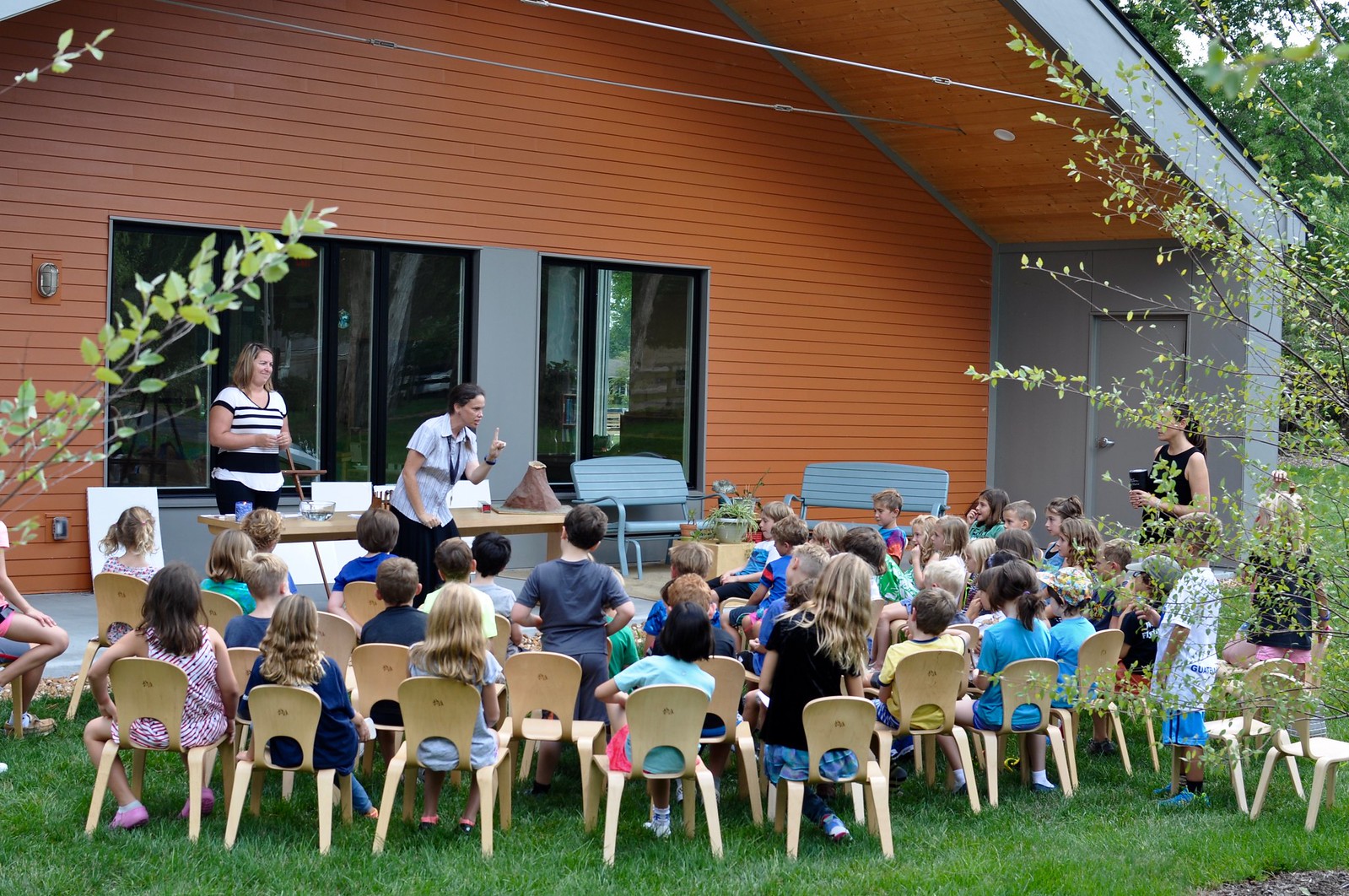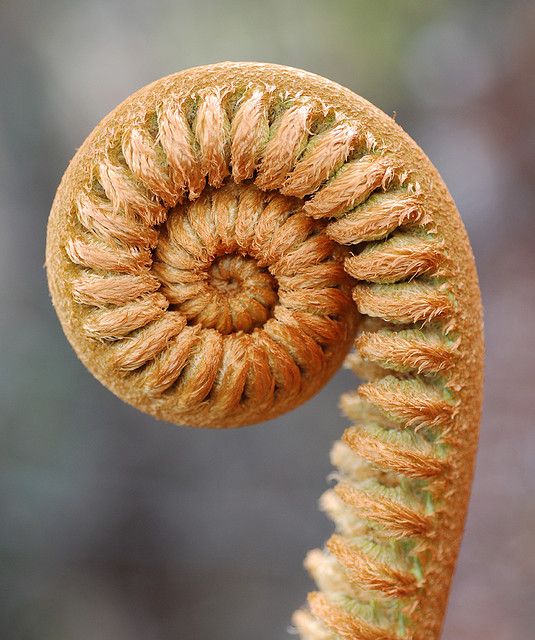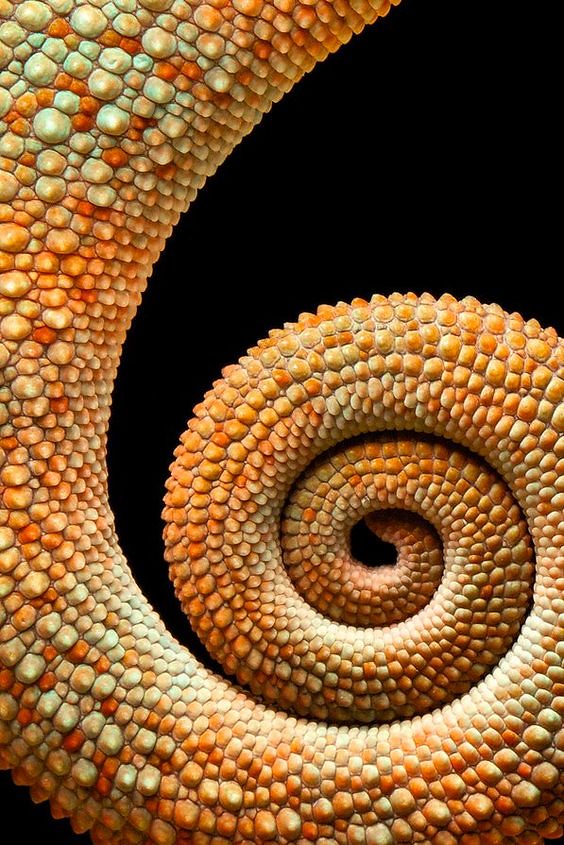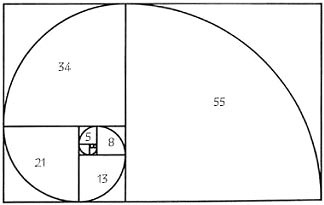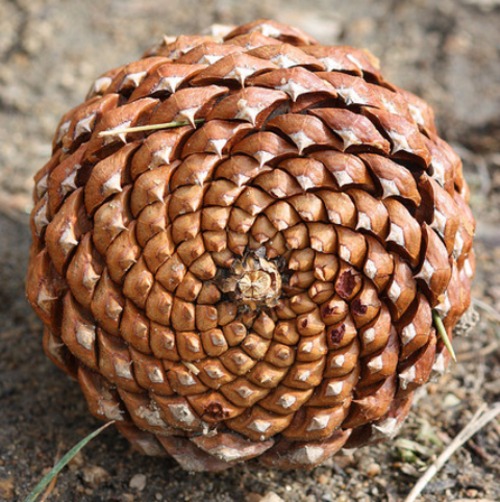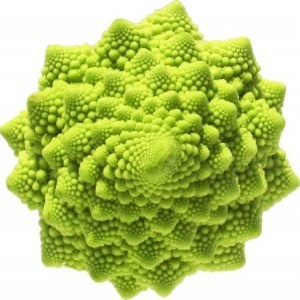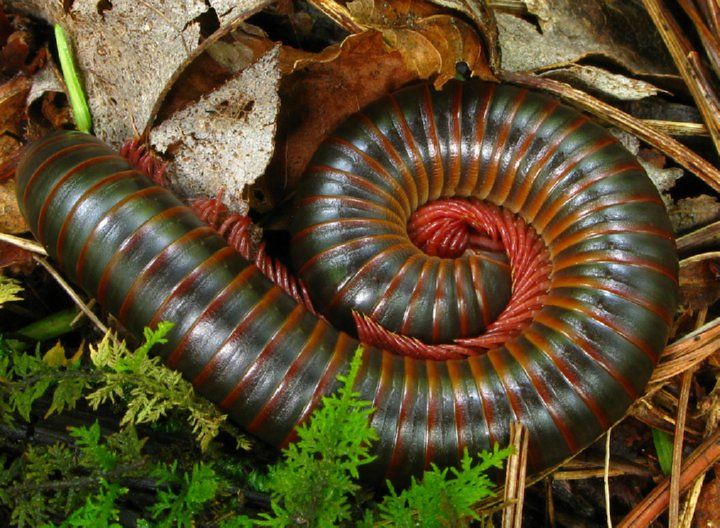
This spring marked a very special occasion at Villa di Maria: the sixth year graduation, where nine of our most beloved students marked their move out of the VdM community. Their doting directress, Rebecca Callander, went above and beyond to honor them in her speech, which celebrates each individual and what they have brought to the classroom and beyond. Below, her touching words.
Good evening. I would like to open with a quote by Pablo Picasso:
The artist is a receptacle for emotions that come from all over the place: from the sky, from the earth, from a scrap of paper, from a passing shape of a spider’s web.
Our prepared environment for the school year was held in an international sculpture park, where we have interacted with world-renowned artwork on a daily basis. Each child has had a chance to respond to Laumeier artistically, environmentally, personally. The prepared environment of the park has indeed helped shape us from its sculpture to its sky, earth, scraps of paper, and butterfly chrysalis.
And how it has shaped you! You who have worked so hard each day, and it shows. You have practiced making decisions, learning academic skills, and organizing your time. You have shown courage, toughing out difficulties like friendship quarrels, a skinned knee, a failed experiment. You have exhibited tenacity, working hard over long periods of time until understanding has been reached. You have shown boundless curiosity, researching a whole universe of topics. You have engineered countless projects and fixed materials, often independently. You have pondered difficult questions of spiritual, philosophical, and scientific nature. You have shown true acts of compassion for people, expressing disdain for some of humanity’s worst decisions and desiring to make the world a better place. You have conducted yourself with humor and kindness and have bonded together as a wonderful group of nine sixth years. Each of you has offered yourself to the community as an individual, opinionated and reflective, vulnerable, and has learned to be accepting of yourself and of others.
Picasso also said,
Every child is an artist. The problem is how to remain one once we grow up.
I believe that artists are not just painters wearing berets with moustaches using ridiculous combinations of words like chronological ephemeral recontexutalization of the highest ordered sapien organism (Yes, Cameron and Seth, that is for you—do you get it? It means the life cycle of the person in Artspeak!) I believe true artists are the individuals who can stay clear in their minds, allowing them to record life, to make connections across intellectual chasms, to draw parallels in history, to observe nature and “recontextualize” it as something new. An artist is curious and responds to need.
The child is naturally this. The child is an artist by default without having acquired the ruinous quality of self-doubt, which while a great instinct to help keep us from danger, can atrophy the most inventive and expansive parts of us. In Montessori, the young person stays an artist-- creative, interested, driven, exponential--yet goes a step further developing the discipline, focus, and perspective necessary to allow big ideas to happen in smaller contained moments, thus influencing all acts throughout the day. I believe that each of you will hold this potential to be an artist, forever and always.
I would like to take a few moments now to offer the audience, who love you and have chosen this Montessori journey for you, a few insights into how each of you is an artist. I will do this by taking a cue from the prepared environment of the year, by comparing each of you to a sculpture found in Laumeier Sculpture Park.

Simon
To Simon, who is attending his brother’s graduation from West Point, you are Mark di Suvero’s Bornibus, strong and sensitive. Simon has consistently been drawn to the epic struggles of humanity and to how tenuous science and the laws of physics can be. Simon in the classroom is razor focused doing square root problem upon square root problem, yet also sensitive, laying his head on his friend’s shoulder as a sign of affection. And, Simon has a dry and wacky sense of humor, which Bornibus also reveals, as this bizarre mythic beast crawls out of the forest onto the Estate House Lawn.

Kat
To Kat, you are Eyeball by Tony Tasset. Staring, indeed never missing a beat, you have gleaned so much from our classroom this year, being in lesson after lesson, and observing everything. But the eye is not strictly for seeing; no, the eye is a symbol for perceiving. You have been the voice of understanding and knowledge in the classroom and have offered us your wisdom throughout the year. And also, since you have a delightful sense of humor, replete with delightful accompanying laugh, what could be funnier than a giant eyeball randomly placed on a manicured lawn? Well, maybe poking the eyeball with a stick, but that’s simply against sculpture park rules!

Seth
Seth, rolling along, you are Earthmover by Marie Watt. There’s a lot going on in this sculpture! When a person first encounters Seth, they immediately sense his humor—giant tractor wheel randomly stuck in the mud? Yup--ha! But dig a little deeper, and we see that there is way more to this piece than humor alone. Like an earthmover, Seth, you are not afraid to dig a little deeper too, to work hard. And speaking of movement, Seth is an excellent timekeeper--always aware of schedules and everything going on--Seth has been an outstanding leader and has kept us moving along.

Julia
Julia, standing tall as a leader, you are Aurelia Roma by Manuel Neri. Serene in your ability to be calm and centered, expressive in your ability to articulate your emotions and experiences, contrasting, like how the smooth marble juxtaposes with the rough-hewn marble, showing a mental toughness and a gentle response to others. I also appreciate how you embody the traits of the marble sculptor, patient, and seeing a project several steps ahead. A people person, the figure suits you well.

Luke
Luke, you are the conceptual piece, St. Louie Bones by Robert Stackhouse. St. Louie Bones references the dichotomy of concept: the opposition and merging of two rivers, flowing into each other, a debate of the currents, and, ultimately, a mixed resolve of the waters--a new perspective. You are our class debater, you have opened our eyes to the other side of an argument and have done it well-- eloquently, logically, and with passion. Get Luke going on politics or MMUN, watch out, the resultant dialogue will be electric! And, I also had to include this photo of you—it’s adorable. You seem to be holding the piece together, either that, or you are simply just ready to take a nap.

Bethany
Bethany, how could I not choose Cromlech Glen for you? By the way, this happens to be one of my favorite sculptures of the park—I love the artist Beverly Pepper! She envisioned the sculpture as a gathering place to present poetry readings, musical performances or, alternatively, a peaceful site for meditation. This spot definitely allows for reflection with its access to wooded landscapes coupled with the sounds of nature. How does this not perfectly reflect all that is you? Art, expression, poetry, science, observation! Well, I suppose it’s missing kindness and generosity—but one art piece can’t have everything!

Cameron
Cameron, my poet, philosopher, geometrician, and human calculator! You’re Dan Graham's Triangular Bridge Over Water, which unapologetically lifted from Laumeier’s website, is “Like a futuristic version of The Bridges of Madison County, as if designed by Albert Einstein, the two-way mirror panels attached to a steel truss reflect and absorb the exterior public space. This arrangement counter-intuitively creates an interior private experience where the self, bridge and woods are simultaneously reflected. The fixed dimensions of the structure are warped by the speed of the viewer who crosses the bridge; what you see is continually altered by the act of seeing.” Need I say more? And I daresay, Artspeak…you’d be good at it.

Kaylee
Kaylee, one of the first things I learned about you was that your middle name was Acacia. I must therefore choose for you, Johann Feilacher’s Redwood I. Thinking of you trying to hug your arms around the circumference is quite hysterical, but if you could, you would, for your love for science and nature is among the strongest of anyone I know. I also love how this piece stands tall, which you do at least 1000 feet into the air with your spirit and spunk. The tree is a symbol of life and giving, with its sturdy woody stem made of xylem and phloem, which allows the water and food to nurtures the organism, like how through you flows friendship and kindness nurturing everyone around you.

Emily
And finally, Emily, for you I choose Tony Rosenthal's House of the Minotaur. This piece is literally full of twists and turns and surprises, just as you have done for us all—taking your classroom work to the next level, being courageous in social justice, and showing us how many different paths you can take with your theatrical ability! The bright colors remind me of your bubbly effervescent personality. And I agree with the closing words of your speech--you are definitely not throwing away your shot.
Friends, I am so proud of you. And yes, Bethany, each of you is your own work of art, your masterpiece. I can’t wait to see what else you will add to it. In the words of Dr. Montessori, "Imagination does not become great until human beings, given the courage and the strength, use it to create."
And create, I know you shall, for you all shall continue to take the path of the artist, because you have found the way, just as we have found our way back to Villa di Maria! Full circle.
Are you ready to start your new journey? Please stand as we call your name!
Thank you, Rebecca, for sharing your beautiful speech! And please check back for the individual graduates' speeches in the coming weeks!
 "The Timeline of Life provides the child with a vision of all the life that comes on Earth before the human being. In Upper Elementary, children enter the room having explored the timeline through retelling the story, animal research, and memorization of time periods and of species introduction. Around the age of nine, the elementary child experiences a deeper passage into abstraction and therefore experiences the Timeline of Life on a new level, much like how when climbing a circular staircase, you can see the same visual information below, but from a new vantage point as you spiral around. The same Timeline of Life story is told, but new information is emphasized." Upper Elementary Directress Rebecca Callander shares what is special about the study of life through the timeline, below. All words are her own!
"The Timeline of Life provides the child with a vision of all the life that comes on Earth before the human being. In Upper Elementary, children enter the room having explored the timeline through retelling the story, animal research, and memorization of time periods and of species introduction. Around the age of nine, the elementary child experiences a deeper passage into abstraction and therefore experiences the Timeline of Life on a new level, much like how when climbing a circular staircase, you can see the same visual information below, but from a new vantage point as you spiral around. The same Timeline of Life story is told, but new information is emphasized." Upper Elementary Directress Rebecca Callander shares what is special about the study of life through the timeline, below. All words are her own! Our focus revolves on an in-depth look of several tents of life. We explore how water is crucial for all life and how the egg is really a container with the ocean inside it. This then sets the stage for cellular biology and vertebrate study. We consider how while complexity of a species may enhance survival, it may also increase fragility within a species—there are more moving parts with more things to go wrong. We discuss species collapse and adaptations, touching upon the rise and fall of the trilobite. We look at the immense variety of life on earth and research classification and etymology. The cephalopod is a relative of the squid that swims backwards, whose name derives from two Greek words: cephal, meaning head and pod, meaning foot—a creature with its head on its feet! We discuss the changing geography of the Earth, taking a look at plate tectonics and climate change. Finally, we discuss the field of paleontology.
Our focus revolves on an in-depth look of several tents of life. We explore how water is crucial for all life and how the egg is really a container with the ocean inside it. This then sets the stage for cellular biology and vertebrate study. We consider how while complexity of a species may enhance survival, it may also increase fragility within a species—there are more moving parts with more things to go wrong. We discuss species collapse and adaptations, touching upon the rise and fall of the trilobite. We look at the immense variety of life on earth and research classification and etymology. The cephalopod is a relative of the squid that swims backwards, whose name derives from two Greek words: cephal, meaning head and pod, meaning foot—a creature with its head on its feet! We discuss the changing geography of the Earth, taking a look at plate tectonics and climate change. Finally, we discuss the field of paleontology.

 While its graphic beauty is compelling, and its breadth of information offers a good introduction to the diversity of species, the Timeline of Life is also purposely incomplete—not all species are represented. This allows children to do their own research, make their own connections. Years ago, I was accosted by a young first year child:Indignant, a child demands, “But, where are the spiders?”“Hmm. Did they not make it on the timeline? Maybe they just appeared on Earth when the Human Being did.”“No! They must have come on during the middle of the timeline. I see other bugs and creatures like spiders then.”“Oh, that seems logical. Would you like to find out? And, then, if your hunch is right, you could add a spider to our timeline?”Just recently, I was delighted by another heated conversation:Horrified, a fourth year exclaims, “Ms. Rebecca, just look at what someone did to your timeline! They taped a spider to it!”“Yes. That was Celene, thirteen years ago. She wanted to remind us all of when the spiders came on Earth. It has been on there a while. Should we take it off?”“No!”“Are there any creature that you think are missing?”“Wolves!”
While its graphic beauty is compelling, and its breadth of information offers a good introduction to the diversity of species, the Timeline of Life is also purposely incomplete—not all species are represented. This allows children to do their own research, make their own connections. Years ago, I was accosted by a young first year child:Indignant, a child demands, “But, where are the spiders?”“Hmm. Did they not make it on the timeline? Maybe they just appeared on Earth when the Human Being did.”“No! They must have come on during the middle of the timeline. I see other bugs and creatures like spiders then.”“Oh, that seems logical. Would you like to find out? And, then, if your hunch is right, you could add a spider to our timeline?”Just recently, I was delighted by another heated conversation:Horrified, a fourth year exclaims, “Ms. Rebecca, just look at what someone did to your timeline! They taped a spider to it!”“Yes. That was Celene, thirteen years ago. She wanted to remind us all of when the spiders came on Earth. It has been on there a while. Should we take it off?”“No!”“Are there any creature that you think are missing?”“Wolves!”
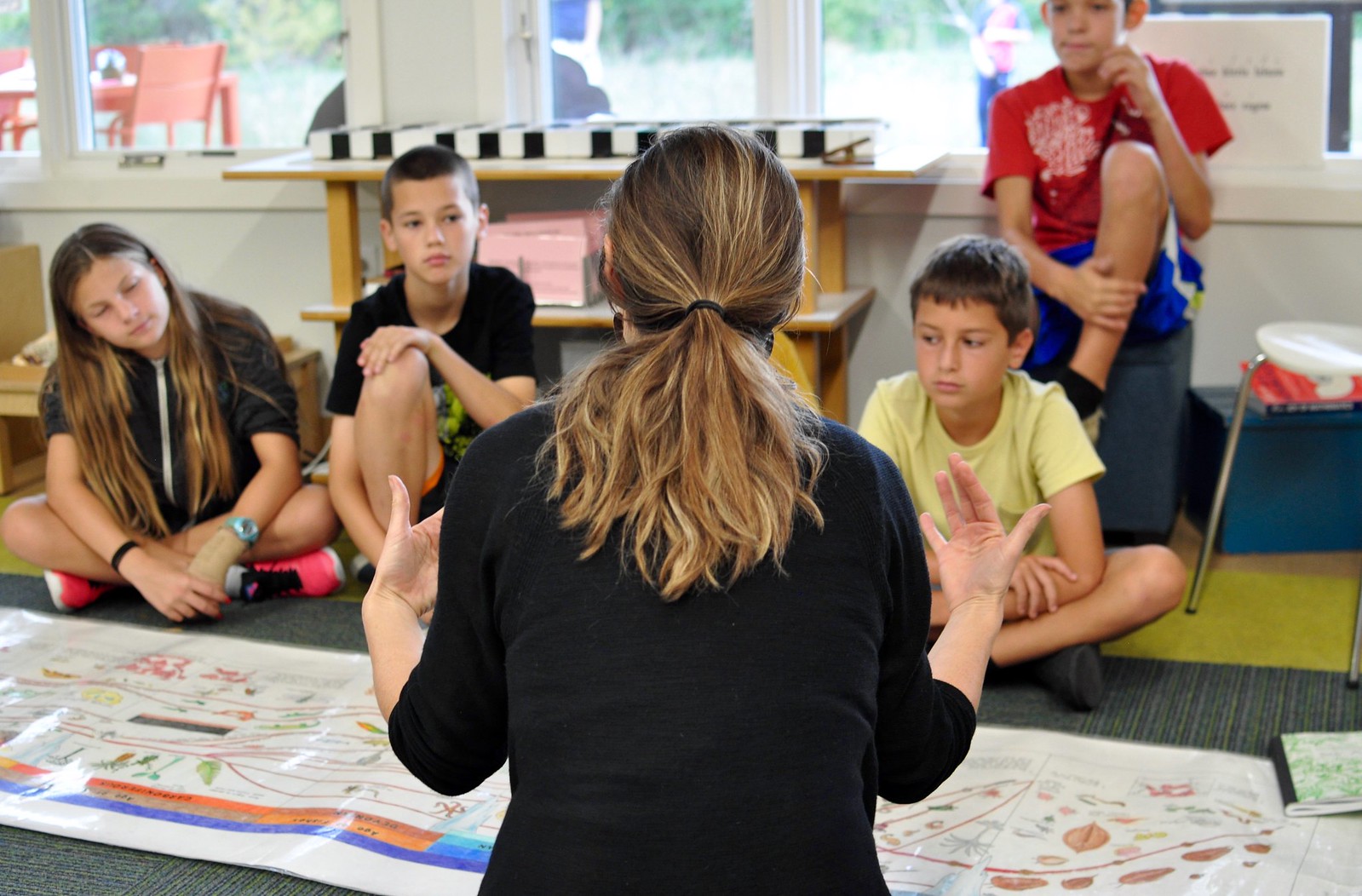
 Time goes on, the universal pull of the Coming of Life and the Timeline of Life attracts another generation of students, adding their own indelible marks, following their rules to life, to eat, grow, and create/multiply!Thank you, Rebecca, for sharing such a broad and fascinating topic! Be sure to check back for a post on the Upper Elementary fossil hike...
Time goes on, the universal pull of the Coming of Life and the Timeline of Life attracts another generation of students, adding their own indelible marks, following their rules to life, to eat, grow, and create/multiply!Thank you, Rebecca, for sharing such a broad and fascinating topic! Be sure to check back for a post on the Upper Elementary fossil hike... 



































































































